Description
ABOUT
Foxtail millet, or Thinai, or Setaria italica, the technical name for these tiny seeds with a 2 mm diameter and a thin, crispy hull that is typically light yellow-brown or rusty black, is an annual crop cultivated in dry and semi-arid environments. The cultivation of this gluten-free cereal is thought to have started around 8000 years ago, and there is proof that it was widely grown in Cishan, China, along the Yellow River.
Foxtail millet is a dry crop that is planted in the final week of May and harvested in up to 70 days. Along with a few northeastern states, it is mostly cultivated in Andhra Pradesh, Karnataka, Telangana, Rajasthan, Maharashtra, Tamil Nadu, Madhya Pradesh, and Uttar Pradesh.
ABOUT MILLETS
Millets are small-seeded grains that originated in Africa and are now widely grown as a staple grain throughout Africa, Asia, India, and the Middle East. There is evidence of millet cultivation in the Korean Peninsula between 3500 and 2000 BCE. Millets are mentioned in the Yajurveda, a very ancient religious book, which indicates that production and consumption of were an indigenous practice, especially in the Asian region (around 4500 BCE). Millets accounted for over 40% of all cultivated grains prior to the Green Revolution (contributing more than wheat and rice). However, after the revolution, rice cultivation has doubled and wheat production has tripled, making millets less valuable as source of food.
Inclusion of Millet is a great idea for a variety of reasons. Sorghum (jowar), pearl millet (bajra), finger millet (ragi), and other coarse staples like maize, barley, oats, and the like may not match the grain quality of rice and wheat, but they surely outperform them in terms of nutritional value. These are now commonly referred to as “nutri-cereals.” While many millet grains have similar protein content as wheat, they are higher in vitamins, including vitamin B, iron, phosphorus, and a variety of other minerals. Furthermore, these are gluten-free substitutes for finer cereals, making them alkaline rather than acidic. That is why coarse cereals have long been a popular staple diet in many regions of the country, particularly in rural areas.
We have been consuming millets in various forms for decades in India. In the form of millet rice, rotis, bhakris, mudde (dumplings), upmas, dosais, and idlis. In fact, barnyard millet, popularly known as “vrat ke chawal,” is one of our traditionally recognised foods during fasts.
TYPES OF MILLETS
| Finger Millet | Kezhvaragu, Nachani /mundua |
| Kodo Millet | Varagu, Koden/Kodra |
| Foxtail Millet | Thinai, Kangni/Rala |
| Little Millet | Samai, Kutki |
| Barnyard Millet | Kuthiravali, Jhangora |
| Pearl Millet | Kambu, Bajra |
| Sorghum | Cholam, Jowar |
HISTORY
Among the more than 100 species in Setaria, humans domesticated the cereals foxtail millet (S. italica), S. macrostachya, and S. pumila. Only foxtail millet, though, was cultivated on a global scale, making a significant contribution to the rise of Chinese civilisation and continuing to be a staple cereal in arid and semi-arid areas. Both green foxtail and cultivated foxtail millet can be regarded as members of the same species. The domestication of green foxtail into foxtail millet is thought to have started around 16,000 years ago, became a recognised crop between 9000 and 10,000 years ago, gained popularity in Northern China between 5000 and 6000 years ago, and then spread to other regions of the world.
HOW TO COOK MILLETS
Follow some steps to reap the maximum benefits from the wonder grains- Millets.
- Soaking
Millets take less time to cook but soaking is very essential. Millets’ phytic acid must be broken down by soaking them overnight. Iron, zinc, and calcium are among the good guys that are less effective at being absorbed due to phytic acid, which also makes it much simpler for your stomach to digest millets. Therefore, be sure to soak millets overnight.
- Do not compare the texture with rice
Millets and rice have entirely distinct textures. The rice that has been cooked will be fluffy and soft. Millets, on the other hand, will be fluffy and soft, but their texture and flavour will be quite different. Try to include millets in your diet because they are healthier than rice.
- Cooking millets
Pressure Cooker Method: (1:2 – 2 whistles)
In a pressure cooker, add 1 cup of millet to 2 cups of water. Cook on a medium flame. Reduce the flame after the first whistle. Turn off the flame after the second whistle. Set it aside for a while till it releases its pressure. The millet will get thoroughly cooked with the residual heat. Do not stir the millet when it is hot, as it tends to become mushy.
Open Vessel Cooking (1:2)
Add one cup of millet to two cups of water. Cook it on a medium flame with a lid. After the water boils, the flame should be reduced. When the water evaporates (in about ten minutes), take it off the flame and firmly close the lid. Do not stir the millet when it is hot, as it tends to become mushy.
To ensure the millet is thoroughly cooked, taste it last. If there is extra water left, use the extra water to make millet kanji, a fantastic probiotic!
- Making millets nutritious
Adding vegetables and tempering with wood pressed oil or ghee and making pulao makes millets more appealing and tastier.
HOW TO ADD FOXTAIL MILLET IN YOUR DIET
You can substitute foxtail millet for wheat and rice in your everyday diet. Y ou can use Foxtail millet or Thinai to make south Indian meals like Idlis, Dosais, Appam, Pongal, and Idiyappam.
You can prepare porridge with cooked foxtail millet for a nutritious meal and add your favourite nuts and fruits for a flavour.
Foxtail millet can be used to make popular south Indian breakfast Upma, a filling nutritious option. Add ghee and cashews for some healthy fats.
Grab some pearl millet flour and add a portion of it to whole wheat flour to make chapatis. Cooking chapatis with 50% whole wheat flour and adding pearl millet flour or any millet-based flour, such as ragi flour or jowar flour, for the remaining portion of the dough is one of the simplest methods to include millets in your diet.
COMPARISON BETWEEN RICE AND MILLETS
Rice is a staple food and is also used in numerous dishes like idli, dosa, and others. Most people prefer refined white rice to consume, but there are traditional rice varieties available that are unpolished. Rice is a good source of energy as it contains a higher amount of simple carbohydrates. These basic carbohydrates do, however, breakdown fast and raise blood sugar levels. As a result, eating more rice can lead to obesity.
Polished rice contains 28 percent carbohydrates but only 3 percent protein. Additionally, it is a rich source of numerous crucial micronutrients like iron, manganese, and vitamin B.
On the other hand, millets are a cereal grain that are mostly utilised for local consumption. It is high in dietary fibre, abundant in protein, and contains vitamins, potassium, phosphorus, iron, and magnesium—essential nutrients our bodies require. They therefore improve digestion and provide nutritional value that is comparable to that of fruits and vegetables.
Although rice remained the main basic diet, customers are now looking for better and more wholesome meal options. Because of this, millets have recently gained popularity. Because it contains far more protein and fibre than rice, millet is a healthier alternative.
If you choose millets, you can lead a healthy lifestyle. This is due to the fact that they are rich in beneficial minerals and vitamins.
BENEFITS OF FOXTAIL MILLET
- Millets are often preferred for maintaining heart health. These amazing tiny grains aid in the production of the neurotransmitter acetylcholine, which not only protects cardiac functions but is also gluten-free, high in protein, and low in carbohydrates. Consume it regularly to shield your heart from numerous diseases.
- Foxtail millets decrease diabetes risk. It aids in improving the body’s responsiveness to insulin and lowering blood glucose levels. Its magnesium content controls the body’s glucose metabolism and helps in the secretion of insulin.
- It has a low glycemic index, which classifies carbohydrates according to how much they elevate blood sugar levels in comparison to a reference food. As a result, millets boost feelings of fullness, reduce appetite, and slow down the rate of digestion. Millets help us work for a long time by releasing sugar into our blood slowly.
- Foxtail millet contains a lot of the amino acid tryptophan, which is essential for fighting off hunger pangs. Increase your intake of foxtail millet if you are one of those people who are on a weight loss journey, because it prevents the build-up of fatty substances in the body.
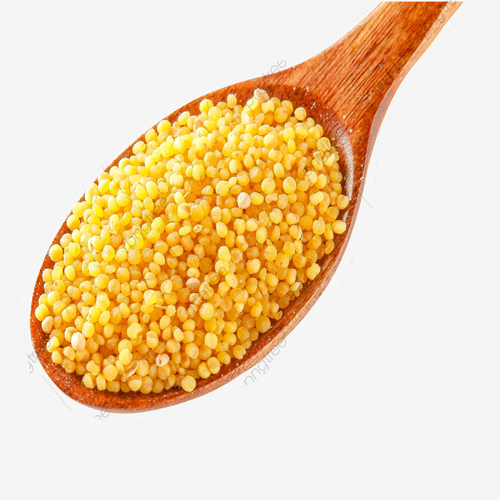

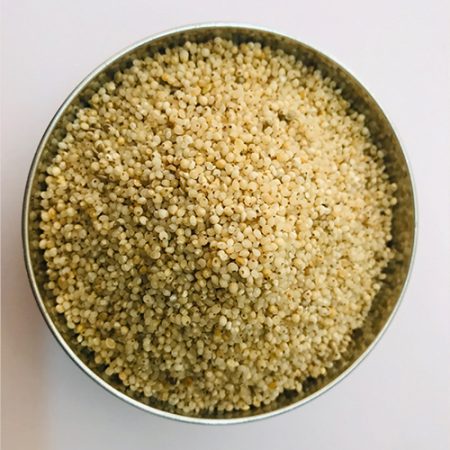
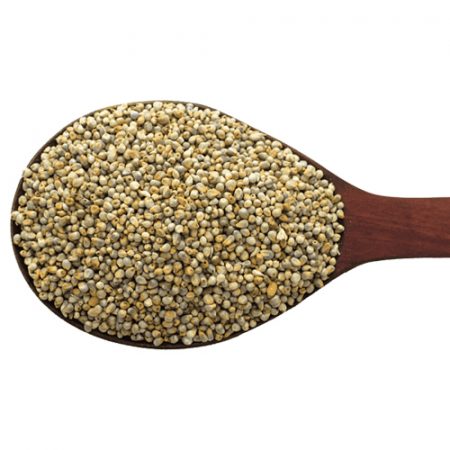
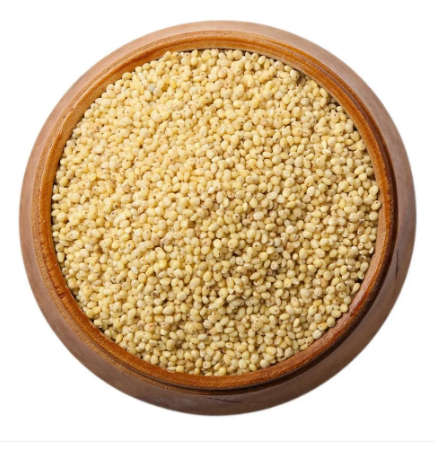
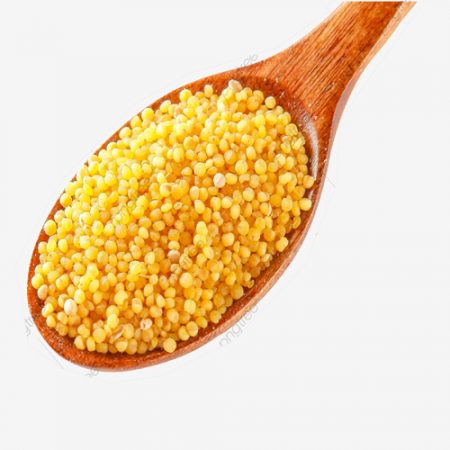
Reviews
There are no reviews yet.